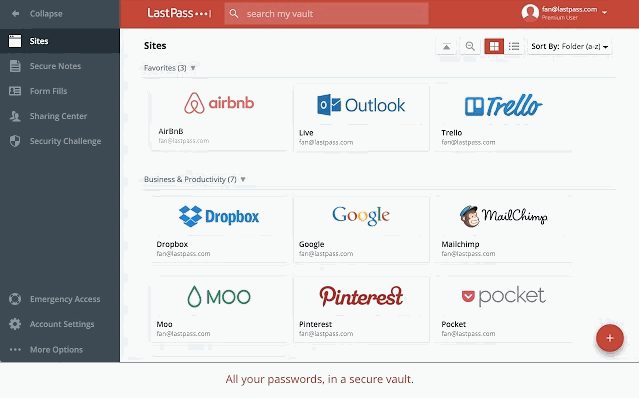

- #Chrome lastpass extension how to
- #Chrome lastpass extension zip file
- #Chrome lastpass extension update
- #Chrome lastpass extension Pc
- #Chrome lastpass extension zip
Open Notepad or your favorite text editor.You should now see the AppDeploymentToolkit folder with files & the empty Files folder at “C:\Downloads\LastPassCRX” Copy-Item -Path "C:\Downloads\PADT\Toolkit\Files" -Destination "C:\Downloads\LastPassCRX\Files".Copy-Item -Path "C:\Downloads\PADT\Toolkit\AppDeployToolkit" -Destination "C:\Downloads\LastPassCRX\AppDeployToolkit" -Recurse.Enter the following commands to copy the AppDeployToolkit & Files folders to “C:\Downloads\LastPassCRX”:.Expand-Archive -Path C:\Downloads\PSAppDeployToolkit_v3.8.4.zip -DestinationPath C:\Downloads\PADT.
#Chrome lastpass extension zip
Enter the following command to extract the contents of the zip file:.Unblock-File -Path C:\Downloads\PSAppDeployToolkit_v3.8.4.zip.Enter the following command to remove the Zone.Identifier:.Open Windows PowerShell by Right-Clicking on Windows PowerShell and selecting Run as Administrator.
#Chrome lastpass extension zip file
Download the zip file to a folder created at (C:\Downloads).Download the Powershell App Deployment Toolkit 3.8.4:.
#Chrome lastpass extension how to
How to Install the LastPass Chrome Extension Using the PowerShell App Deployment Toolkit This tool is an absolute must for Microsoft Endpoint Manager Configuration Manager (MEMCM) / (SCCM) Administrators or anyone who is responsible for packaging and deploying software. The PowerShell App Deployment Toolkit can be used to replace your WiseScript, VBScript and Batch wrapper scripts with one versatile, re-usable and extensible tool. Hope this helps! I've been battling these LastPass issues for over a year and thought I'd mention what I've experienced.This article will serve as an informative guide and give you a clear understanding of how to perform silent or interactive installs and uninstalls of the LastPass Chrome Extension using the Powershell App Deployment Toolkit. If you only added LastPass via extension then it may act in a similar way. Enable LastPass and then sign into your Google account. If you downloaded LastPass you may be prompted that there is a new extension. Launch Chrome and it will look as if you just installed it. *If you ever want your previous "Default" folder back, remove the new "Default" folder Chrome created and change back the "old_Default" named folder to just "Default". Then find "Default" and rename to "old_Default", "original_Default", "Default backup", it doesn't matter.
#Chrome lastpass extension Pc
Please proceed with caution and always backup your data!īefore completing these steps ensure to close out of all Chrome windows.įollow the path below: *Note that "AppData" is a hidden folderĬ:\Users\ (select PC user name)\AppData\Local\Google\Chrome\User Data The fix I've found was having Chrome rebuild the "Default" folder.ĭISCLAIMER: This process will reset all user settings and most likely remove that user's saved passwords, bookmarks, and history.

This can happen from a corrupted Google account. Uninstalling and reinstalling LastPass does not bring extension back. LastPass Chrome extension disappears and is not available in Chrome extension list. In which the fix is enabling the LastPass extension again.
#Chrome lastpass extension update
LastPass chrome extension disappears after a Chrome update or LastPass update, about once a month (confirmed by LastPass support). I've experience this happen in (2) different scenarios: In case any reader doesn't know how to view their extensions and apps, type into your address bar: I have a paid for business account so I am going to reach out to their tech support and reference this discussion. Sure enough, there's LastPass sitting there with the slider box in the disabled position. This morning while typing this comment, I decided to check Chrome's extensions list. I opened this reddit page a few days ago when LastPass disappeared for the 15th time. I am thinking that Chrome pushes a new update and boots LastPass because it isn't certified to be compliant with Chromium version. I'll then sign in as if it was the first time (email is not populated) and everything works for a couple weeks. Within a couple days or a week after disappearing it will show back up with Chrome saying that a new extension has been added. If I'm lazy I won't bother searching the app store and re adding it to Chrome.
This has been happening to me a couple times a month since I installed LastPass.


 0 kommentar(er)
0 kommentar(er)
